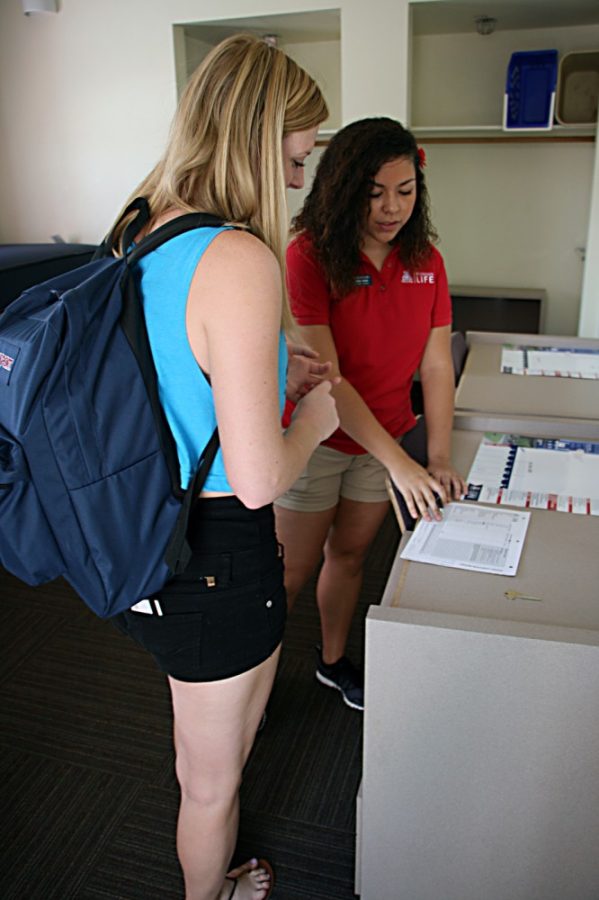The University of Arizona has 23 different on-campus dorms. Normally, each floor in the dorms has its own resident assistant, or RA. RAs are there to enforce the rules of the dorms, build community and check in with residents. I was wondering: what does it take to be a RA, and what draws people in to become one? Is it worth it to be a RA?
Anyone who is in good conduct standings with UA Housing & Residential Life and the Dean of Students can apply. Typically more than 400 students apply. The UA dorms have 241 RAs, according to Assistant Director for Residential Districts, Justin Lukasewicz. The process of becoming an RA includes a standard application and a first round interview with one of the community directors, and a returning RA. The second round, if chosen, is a group interview with other RA applicants. If selected from the group interview, the potential RA’s application is read again for a final decision. The hiring decisions are made by the community directors, or CDs. Each dorm has a CD who are the direct supervisors of the RAs and the residents.
RELATED: ”Resident assistants should, in fact, live in the residence halls”
In order to put together diverse staffs so residents in a building can “see themselves” in their RA staff, CDs look for a broad range of students, said Lukasewicz, who handles the RA selection process. According to UA Housing & Residential Life, a successful candidate will demonstrate “positive attitude, strong interpersonal skills, commitment to helping others, high level of maturity and responsibility, time management and organizational skills, supports the mission and vision of Housing & Residential Life, as well as the core values of: health and wellness, sustainability, safety and equity and inclusion.”
“We know a good team is balanced by different types of personalities, so we look for very different types of people,” Lukasewicz said.
RAs receive free housing, $1,000 for their meal plan per semester and $100 CatCash. I think that free housing and a free meal plan is something that would definitely draw anyone in. But there are drawbacks too. Being responsible for a floor of residents can be difficult. RAs also have to come two weeks before move-in day to prepare for the upcoming school year. Some of the training involves crisis response protocols, conflict management, confrontation skill development and an in-depth look at the policies in place within HRL, according to Associate Director of Residential Education, Jamie Matthews.
RELATED: Dorm days: The life of a resident assistant
“We try to cover all aspects of the RA position and provide the students professional development opportunities,” said Lukasewicz. Training helps RAs best enforce policies, respond to situations and proactively help residents understand their roles within creating a safe community in the dorms, according to Matthews.
August Lawson, an RA at Villa Del Puente, said that along with enforcing the rules of the dorms, RAs are responsible for “creating and maintaining a safe and open environment in order to allow each resident to be the best person they want to be and to be their most successful versions of themselves.”
Whether or not being an RA is worth it obviously depends on the person. But I would definitely think that being a RA is absolutely worth it, and not just because of the free housing and free meal plan. There’s so much to being a RA. As a RA, you are a mentor, a supervisor and sometimes even a friend to your residents. And I think that’s something super cool and special, having the opportunity to help guide someone through their college experience.
Mikayla Balmaceda lived in the Arizona-Sonora residence hall her freshman year, in 2016. Follow Mikayla on Twitter









